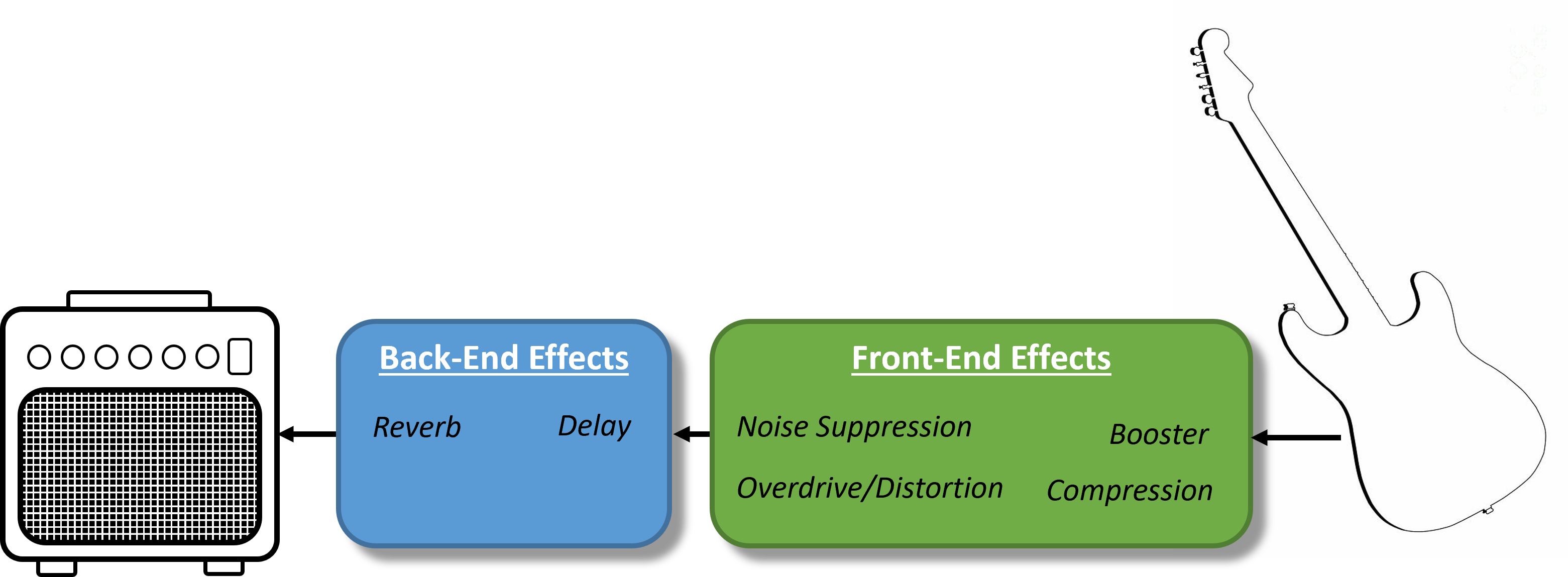Posted by Tony Romero on Sep 16th 2022
What is the essential set of guitar effects pedals you need?
Many beginning guitarists ask, “what is the fundamental set of guitar effects pedals that I need to get started, so I can play all the main types of music?”. Don’t worry! You're not alone in asking this! Most guitar players want to be able to play all the main genres such as rock, country, blues, jazz, metal, new wave, rockabilly, etc. There are five effects to consider.
Check out the YouTube Video: "5 Essential Guitar Effects Pedals"
You are most likely familiar with distortion/overdrive (1) and reverb (2) effects. Many guitar amplifiers have a simple version of these effects built-in. But they typically are limited in what they can do. So, guitarists typically opt for separate pedals to give them more options and flexibility.
Now, it is also important to consider a few other essential effects.
Overdrive/Distortion: This effect distorts your guitar's signal by saturating and/or clipping the sound.
Reverb: Reverb is a guitar effect that is commonly used to create a sense of space and depth in guitar playing. It is achieved by adding a delayed and decayed version of the original guitar signal to create an echo-like effect. This gives the impression that the guitar is being played in a larger space than it actually is, such as a concert hall or a cathedral.
Booster: A guitar booster, often called a boost pedal or clean boost, is an unassuming device that plays a crucial role in a guitarist's rig. Its primary function is to increase the signal strength or amplitude of your guitar's output without significantly altering the tone. Your tone will improve greatly as your amp or other effects receives a stronger input signal.
Delay: Another essential effect is delay (4). Think of it as an echo. It fattens up your sound, much like echoes in a tiled room, like a bathroom. Country players and 50’s/Rockabilly use a very short delay (what’s called a slapback effect), while rock and new wave players tend to use longer delays.
Compressor: A compression pedal (3) is extremely helpful in smoothing out your guitar playing so that you can hear yourself when playing music with other people or with a recording. Especially if you are new to playing guitar, your strumming hand may not be as consistent as you want it to be! This pedal will help you sound like an experienced guitar player- with a steady hand! It's also a great way to get violin-like sustain for solos! Some people choose to use a booster over a compressor, as it keeps the sounds a clean as possible, with more dynamics.
Noise Gate: Finally, one effect that is crucial for your set, especially if you play with a lot of distortion and compression, is the noise gate (5). It makes sure that things stay quiet when you stop playing. The last thing you want is for the song to end, and your guitar is feeding back, hissing, spitting, or crackling.
It is also important to note that pedals are connected in order like a chain- or think about a train that starts with an engine car and ends with a caboose. We recommend you read our post called “How to connect pedals: what are Front-End Effects and Back-End effects?” about the best ways to connect them.

Figure 1: Essential effects you should consider
While you can buy these pedals separately, spend lots of money, and go through the hassle of connecting them up separately, we recommend you consider the HandleBox Perfect Pedal Set. They include these effects in two pedals, AND they are mounted together to make them easy to carry from place to place.
HandleBox Pedals are the EASIEST pedals to use, based on their truly unique design.
- EASY to find your sound, with top-of-the-line audio quality.
- EASY to change your sound when you’re changing up songs; go from rock, country, blues, new wave, metal.
- EASY to carry around- from your bedroom to the garage, to your friend’s house, to church, or the next gig.
- EASY to hook up. The integrated design minimizes the number of patch cables needed.

